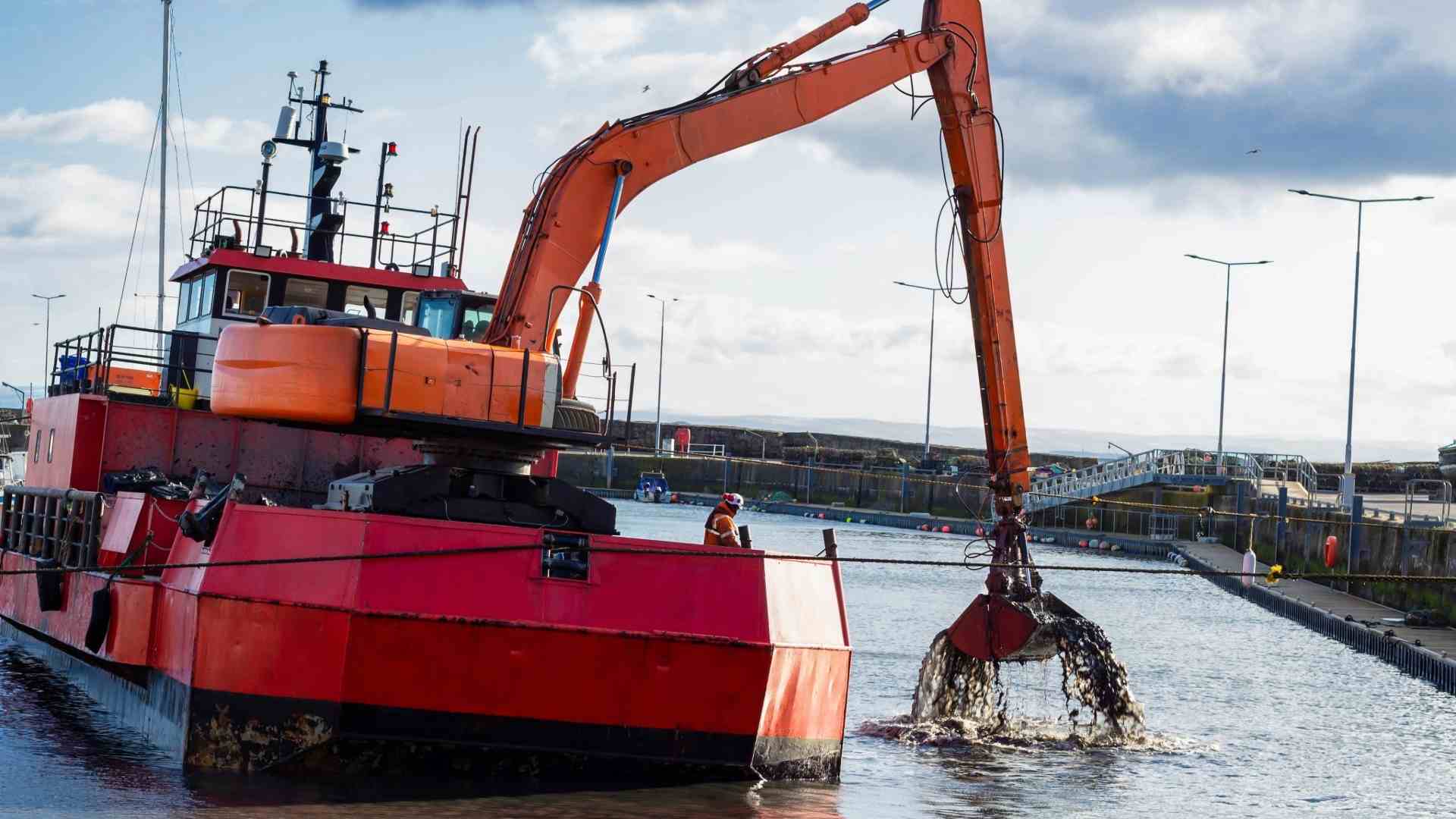Introduction
A major harbor dredging project has officially begun, operating around the clock to maintain authorized depths in navigation channels and boat basin access lanes. The operation, led by the U.S. Army Corps of Engineers (USACE), will remove approximately 65,000 cubic yards of accumulated sediment and transport it to two designated placement sites: First Beach and Rialto Spit.
The work is scheduled to continue without interruption, 24 hours a day, seven days a week, and will conclude no later than February 28, 2026. According to USACE, this effort is crucial to ensuring safe passage for commercial vessels, fishing boats, and recreational watercraft that depend on a clear and properly maintained channel.
Why Dredging Is Necessary
Over time, natural processes such as tidal currents, wave action, and river sediment flow cause materials to settle on the harbor floor. These sediments gradually build up, reducing water depth and making navigation more hazardous—particularly during low tides. If left unaddressed, this buildup can lead to vessel grounding, restricted channel access, and increased accident risk.
Dredging plays a vital role in counteracting this problem. By removing silt, sand, and other debris from the harbor bottom, the project restores the waterway to its federally authorized depth, ensuring smooth and safe transit for all vessels.
For this operation, the targeted removal volume—65,000 cubic yards—is equivalent to about 6,500 standard dump truck loads of sediment. This significant volume highlights just how much material can accumulate over a relatively short time.
Sediment Placement at First Beach and Rialto Spit
Once removed, the dredged material will be transported to First Beach and Rialto Spit, both designated by environmental authorities as suitable placement sites. These areas are chosen for their capacity to safely receive and stabilize sediments without disrupting marine ecosystems.
At First Beach, the placement has a beneficial side effect: helping to replenish sand along the shoreline, which can support beach stability and reduce erosion. Rialto Spit, meanwhile, is already a known sediment management site and can accommodate the project’s remaining volume without significant environmental impact.
Safety Measures for Waterway Users
Even though dredging is occurring continuously, USACE has confirmed that the federal channel will remain open throughout the project. However, boaters and commercial operators are advised to:
- Reduce speed when approaching dredging equipment.
- Pay attention to rig markings that indicate dredge positions and anchor lines.
- Maintain a safe distance from all dredging vessels, pipelines, and support craft.
- Follow temporary navigation advisories issued during specific phases of the work.
Safety is a priority, as dredging involves heavy equipment, floating pipelines, and anchored barges that can create unexpected navigational hazards.
Environmental Considerations
Modern harbor dredging projects follow strict environmental guidelines to minimize ecological impact. Before starting, the USACE conducted sediment testing to ensure that the material is clean and suitable for placement in the designated sites. Wildlife protection measures are also in place, with environmental monitors observing for any disruption to fish migration patterns, shellfish habitats, or sensitive nearshore ecosystems.
In addition, dredging equipment is operated to reduce turbidity—cloudiness in the water that can affect aquatic life. Where possible, work is scheduled to avoid critical breeding or migration periods for local marine species.
Economic and Community Benefits
Maintaining navigable depths is not just a matter of safety; it’s also an economic necessity. Harbors serve as critical hubs for:
- Commercial fishing fleets require deep, clear channels for safe entry and exit.
- Cargo and supply vessels, delivering goods to local businesses and residents.
- Tourism and recreation, with charter boats, ferries, and personal watercraft, rely on accessible waterways.
A well-maintained harbor supports jobs, attracts investment, and ensures the reliability of maritime operations. For local communities, these benefits translate into stronger economic stability and better connectivity with regional and national markets.
Round-the-Clock Operations
Running dredging operations 24/7 may sound extreme, but it offers several advantages. Continuous work reduces the overall duration of the project, minimizes disruption to maritime activities, and allows contractors to take advantage of favorable weather and tide conditions.
Dredge crews work in rotating shifts, with specialized operators managing suction dredges, cutters, and pumping systems. Support boats transport personnel and maintain floating pipelines, while survey teams use sonar equipment to track progress and verify that target depths are being achieved.
The Path Ahead
By February 28, 2026, the project aims to have fully restored the harbor’s authorized depth, ensuring years of safe and efficient navigation. Upon completion, USACE will conduct a final survey to confirm that dredging targets have been met. This work will also inform future maintenance schedules, as harbors require periodic dredging to keep up with natural sedimentation rates.
As dredging continues, local mariners are encouraged to stay informed through notices to mariners (NTMs), harbor authority updates, and USACE project bulletins. Cooperation between dredge crews, harbor officials, and waterway users will be key to the project’s success.
Conclusion
The 24/7 harbor dredging effort at First Beach and Rialto Spit marks a significant investment in maritime safety and community infrastructure. By removing 65,000 cubic yards of sediment, the project safeguards navigation channels, supports economic activity, and preserves the long-term viability of the harbor.
With careful planning, environmental stewardship, and round-the-clock work, this dredging operation demonstrates how proactive maintenance can protect both navigational safety and local livelihoods.
